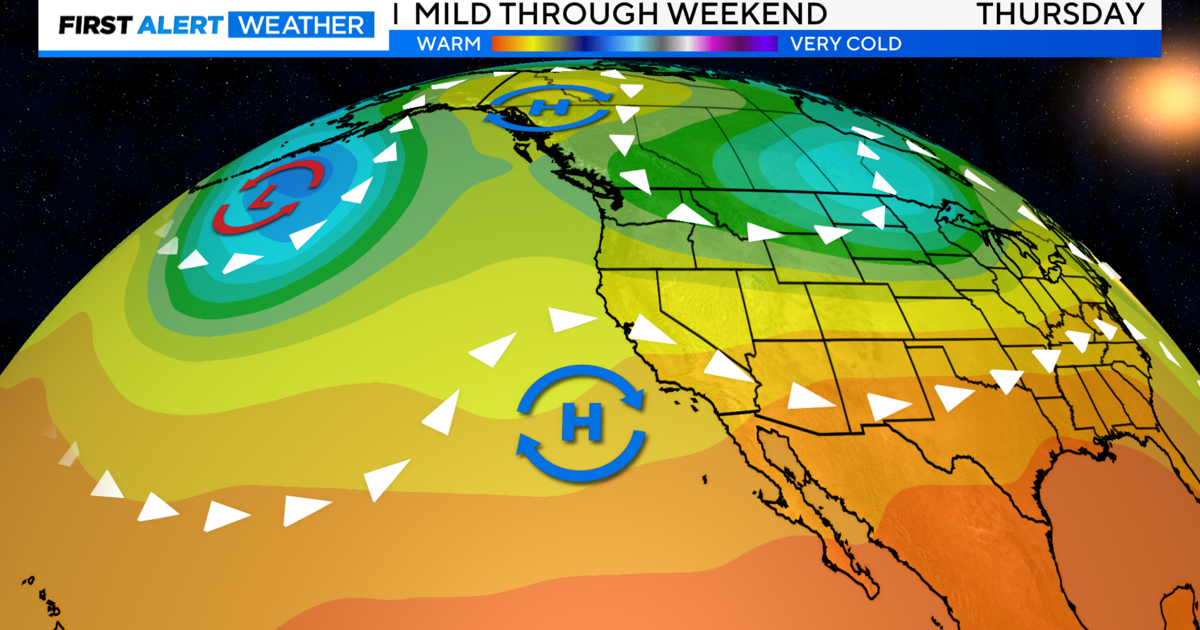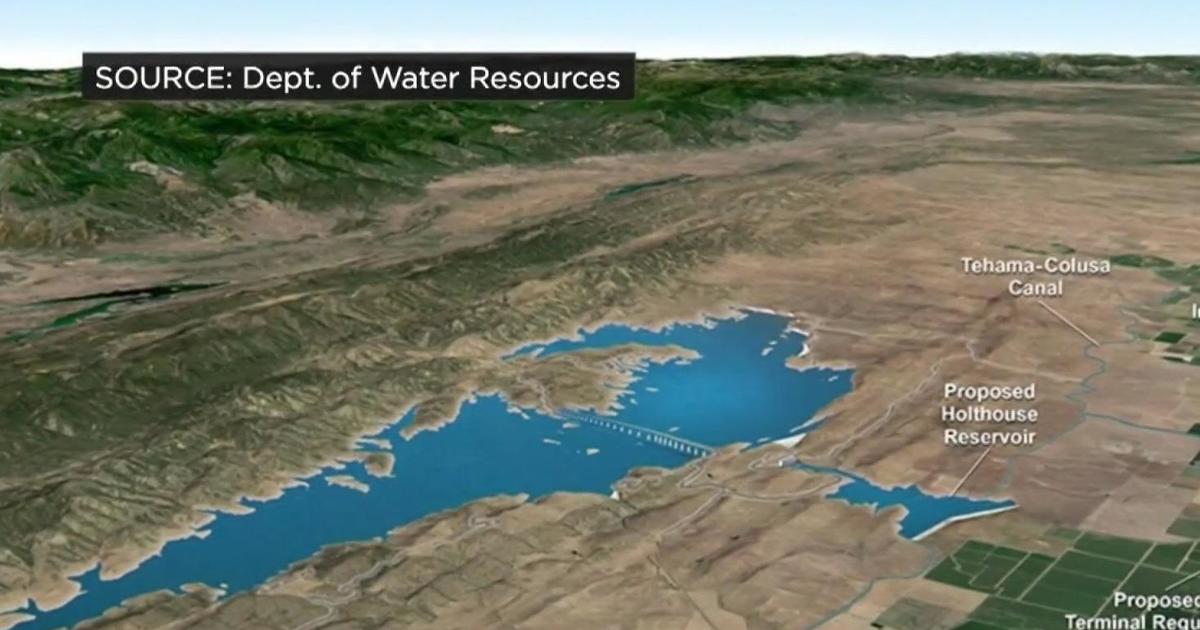Reservoirs Release Water As California Storms Continue
SACRAMENTO, Calif. (CBS13/AP) -- State and federal agencies have started dumping water from Central Valley reservoirs to make way for rain and snowmelt during a soggy series of storms expected to last into next week, officials said Wednesday.
"We're just in a wet pattern right now centered right over Northern California," said National Weather Service forecaster Johnnie Powell.
The Sacramento area, like most of Northern California, has accumulated more rain than normal for a typical March, "and we're only halfway through the month," he said. Inches of rain in the Sierra Nevada foothills in recent days have caused isolated mudslides and flooding, with more expected.
The federal Bureau of Reclamation is increasing the flow from Folsom Lake, east of Sacramento, from 15,000 cubic feet a second to 25,000.
"The 15-year average for this time of year is 3,500, so it's pretty high up there," said spokeswoman Lynnette Wirth.
Shasta Lake in the northern Sacramento Valley will increase its flow to 25,000 cubic feet a second, from a typical 5,300 this time of year.
The California Department of Water Resources is releasing water from Lake Oroville for the first time since 2006.
"There were adjustments made yesterday pretty much across the board," said Bureau of Reclamation spokesman Louis Moore. "It's a balancing act. You're passing it through the system."
No rivers were near flood stage anywhere in California, said Rob Hartman of the National Weather Service's California-Nevada River Forecast Center. However, the water was high enough that water district managers are routinely patrolling several levees along the Feather and Cosumnes rivers, he said.
High Sacramento River flows were pushing water into the Sutter and Yolo bypasses, low-lying areas set aside to accept overflow.
The heavy Sierra snowpack means flood control agencies can release water from reservoirs now and still capture enough later to ensure summertime water supplies, Hartman said.
Plentiful snow and rain prompted the Department of Water Resources to predict that it can deliver 70 percent of the water requested by its water contractors this summer. The forecast was increased from 60 percent in January and 25 percent in November. The water goes to 25 million Californians and nearly 1 million acres of agricultural land.
Two to three inches of rain fell in the mountains and foothills overnight Tuesday, with another inch or two expected Wednesday, said Powell.
Lighter rain is expected Thursday before another storm Friday brings two more inches to the mountains and an inch in the foothills. The Central Valley can expect rainfall of a quarter to half inch, he said.
The heavy rain is causing problems all over the Sacramento area as the saturated ground causes mudslides and trees to topple.
In Placer County Wednesday morning, there are several reports of trees down blocking roadways. A massive tree fell onto Highway 193 in Newcastle landing on a woman's car and blocking all lanes.
The woman was unhurt, but her car was heavily damaged. Crews are working to remove her car and clear the roadway.
Another tree is reported down across Rock Springs Road in Penryn. This is just off Interstate 80. No injuries are reported.
In Sacramento, crews worked overnight to clear Sierra Boulevard after a huge oak tree came crashing down. A woman was driving westbound on the road when the 70-foot tree fell onto her vehicle trapping her for a short time.
The heavy rain also triggered a small mudslide on Highway 49 between Auburn and Cool on the Placer/El Dorado County line. There were some traffic delays before the mud and debris was cleared.



